A Contextualized Catalog: Proteomic analyses of plant CCVs
Dahhan et al. explore the clathrin-coated vesicle proteome in Arabidopsis
By Dana A. Dahhan and Sebastian Y. Bednarek, Dept. of Biochemistry, UW-Madison
Background: Trafficking of vacuolar and plasma membrane proteins and other macromolecules is essential for plant development, nutrient uptake,…
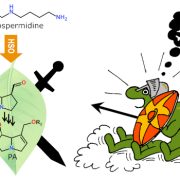
Homospermidine oxidase catalyzes the formation of a bicyclic ring system as part of the chemical defense of plants
Zakaria and Stegemann et al. identify and characterize an enzyme involved in pyrrolizidine alkaloid biosynthesis in a member of the borage family.
Mahmoud M. Zakariaa,b, Thomas Stegemanna,b, Dietrich Obera
a Botanical Institute and Botanic Gardens, Kiel University, Kiel, Germany
b Department…

Short-term memory of warm daytime in Arabidopsis
Murcia et al. discover how plants store information about daytime temperatures to control stem growth during the night.
By Germán Murcia, Cristina Nieto, Romina Sellaro, Salomé Prat, and Jorge J. Casal
Background: Plants increase their stature in response to warm temperatures by enhancing stem…
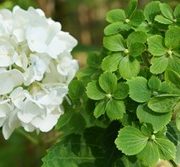
Flowers to Leaves: Bacterial Phyllogen Regulates Host Development
Kitazawa et al. identified a unique proteasome-utilizing mechanism of phyllogen, a bacterial effector protein produced by pathogenic phytoplasmas. Plant Cell. (2022) https://doi.org/10.1093/plcell/koac062
By Yugo Kitazawa and Kensaku Maejima, Department of Agricultural and Environmental Biology, Graduate…
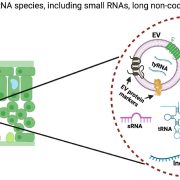
Plant cells secrete diverse RNA species, including small RNAs, long noncoding RNAs and circular RNAs
Karimi et al. showed that Arabidopsis plants secrete numerous RNAs, which are associated with proteins and are located outside extracellular vesicles. Plant Cell. (2022) https://doi.org/10.1093/plcell/koac043
By: Hana Zand Karimi and Roger W. Innes, Indiana University
Background: To prevent infection…
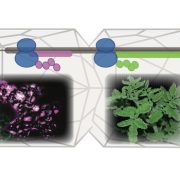
Uncovering new start sites for plant viral protein synthesis
Chiu et al. characterize hidden viral genes in tomato yellow leaf curl Thailand virus.
Background: When viruses such as begomoviruses infect plants, they hijack the host translation machinery to drive the expression of their proteins. This process causes viral disease, leading to great yield losses…
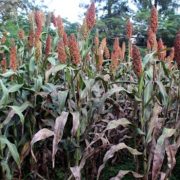
Broad spectrum resistance to fungal pathogens in sorghum is conferred by an immune receptor gene
Lee, Fu et al. discover an unusual immune receptor locus that confers broad-spectrum, strong resistance to fungal pathogens in sorghum.
Background: Sorghum, the fifth most widely grown cereal crop globally, provides food security for millions of people. The fungal disease sorghum anthracnose is the…
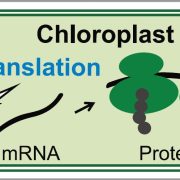
Nonessential genes are nevertheless good for something: Cold acclimation and photosynthesis
By Yang Gao and Reimo Zoschke, Max Planck Institute of Molecular Plant Physiology, Potsdam-Golm, Germany
Gao and colleagues dissect how transcription and translation of tobacco chloroplast genes respond to cold exposure and reveal a critical role for the nonessential gene petL.
Background: Plants…
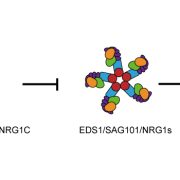
An N-terminally truncated NLR is functional
Wu et al. uncover the unexpected role of the truncated NLR NRG1C in negatively regulating plant immunity by antagonizing its full-length NRG1 neighbors.
Background: Plants utilize sophisticated innate immune systems to fight against pathogens. Their genomes encode abundant immune receptors to detect…

